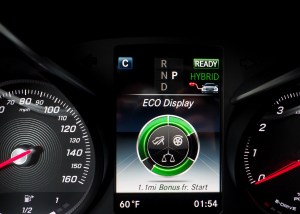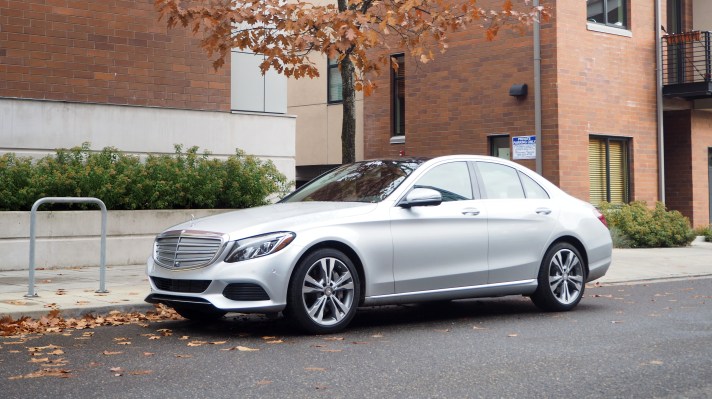The 2016 Mercedes-Benz C350e plug-in hybrid sedan is not a Tesla fighter. It’s not even much of a Chevy Volt fighter. It is a very comfortable, very refined plug-in-hybrid mid-range Mercedes. So if that’s your jam, this is your car.
The C350e has a 2-liter gasoline engine and a 60-kW electric motor, for a combined 275 hp and 443 lb-ft of torque, which means quick merging on the freeway. Mercedes is estimating fuel economy to be about 100 mpg, based on European ratings, but there’s no official word from the EPA here in the states yet, where the testing is tougher and the numbers are likely to be lower.
If you want to dip a toe in EV ownership despite your range anxiety, the Mercedes does travel up to 20 miles on electric power only, depending on how you drive. Mash the accelerator, and you’ll drain the battery quickly. The engine will kick in then, and it will run in a more conventional hybrid mode.
The battery fully charges in 2.5 hours at a 240-volt outlet, but it takes 8-plus hours at a regular 120-volt household plug. That’s pretty typical for an electric car, but Mercedes chose to put the plug at the back of the car. That means you either have to back into the garage or parking space or hope that the public charging station has a long enough cord to reach. You can also get quite a bit of energy back from the regen braking system.

This was after ~5 miles of normal driving.
The C350e will only be available (at least at first) in the eight ZEV states that follow California’s lead on zero-emissions rules, including Oregon, where I tested this car. That’s unfortunate, because, it seems to me, people who drive in areas with less EV infrastructure and longer distances between destinations would benefit more from this technology. Use E-mode to run errands in town on electric power only, then use the hybrid mode to drive 200 miles to the next town.
The test vehicle I had was loaded with every bell and whistle: leather upholstery and linden wood trim, head-up display, parking assist, sunroof and even a light fragrance dispersed throughout the cabin. Standard equipment already includes radar-based regenerative braking to recharge the battery, automatic headlights and windshield wipers and collision prevention technology. All told, the price as tested was $61,040.
In related Mercedes news, Daimler AG is bringing its energy storage business to the United States. Mercedes-Benz Energy Americas will develop and sell vehicle-grade lithium-ion batteries for home and business use, similar to Tesla’s Powerwall.
